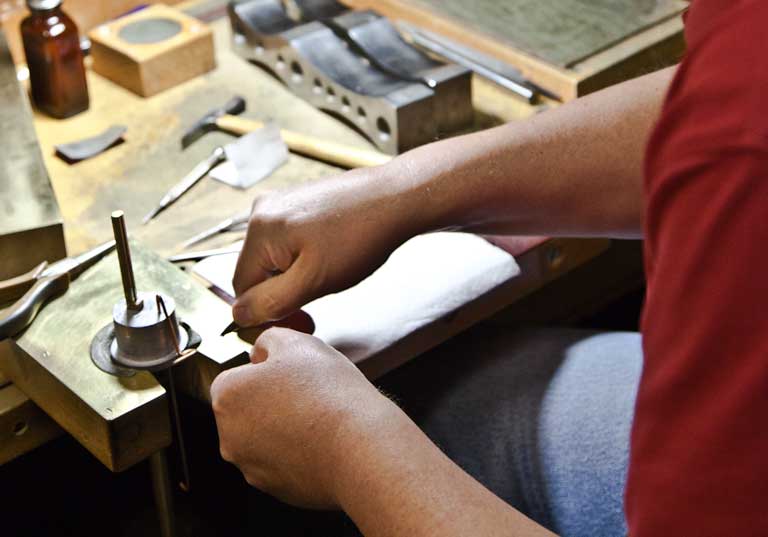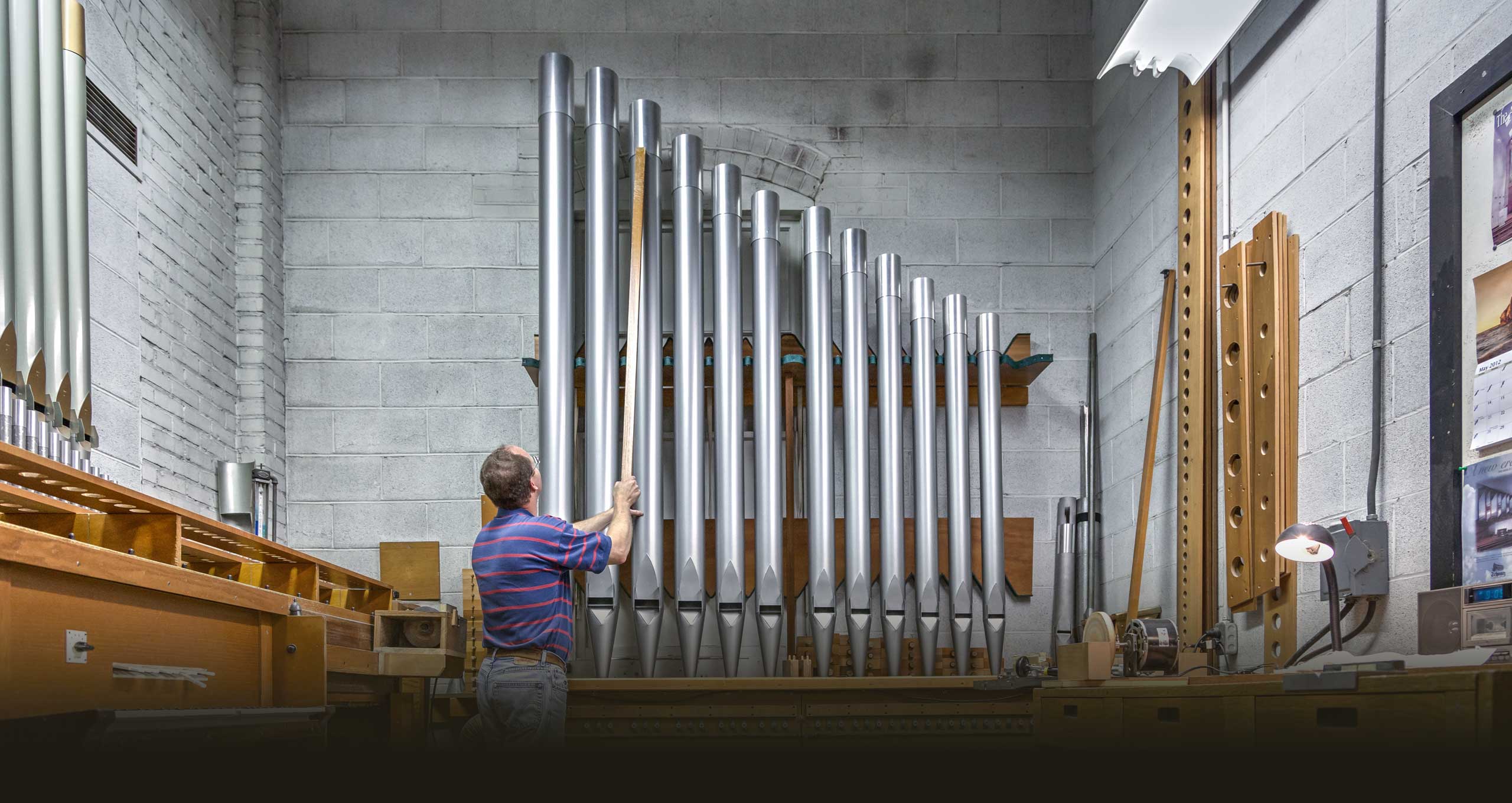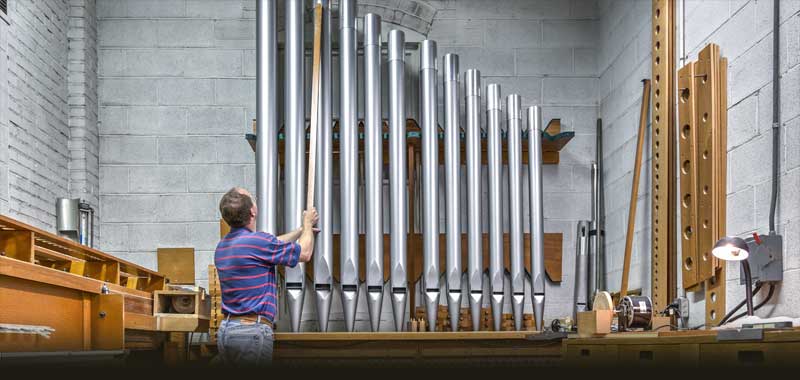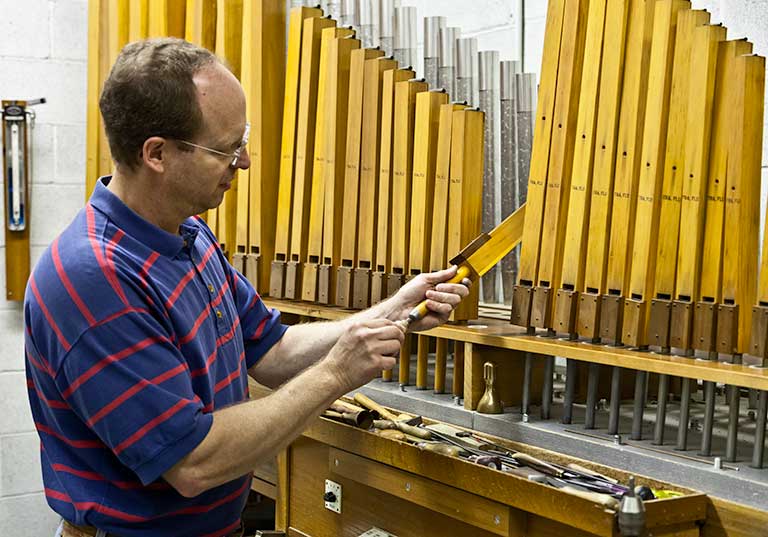The skill of manipulating an organ pipe to make it sound is known as voicing.
Each pipe must be made to play with the proper onset of sound (known as speech), sustained tone, and volume. Voicing is a meticulous task. When the voicing process is complete each individual pipe in the organ forms a beautiful musical instrument. When played as an individual rank or in chorus, their collective voices create the beauty and majesty of sound that can only be produced by the pipe organ.
Organ pipes are divided into two basic types – flue and reed.
The voicing of each type of pipe is dramatically different. Flue pipes create their sound by setting the column of air in the body of the pipe in motion. Adjustments must be made to the pipe in the voicing process to direct the airflow through the pipe to create the proper speech and tone. Reed pipes create their sound by setting a vibrating reed tongue in motion. The brass reed tongue must be of precise thickness and properly curved to create the desired tone. These critical adjustments take hours of time by craftsmen with years of experience.
We are proud that every member of our voicing staff is a musician. Musical background, combined with technical skill, allows the voicer to draw upon the academic study of music as well as years of contextual application as the art and craft of voicing is applied.




